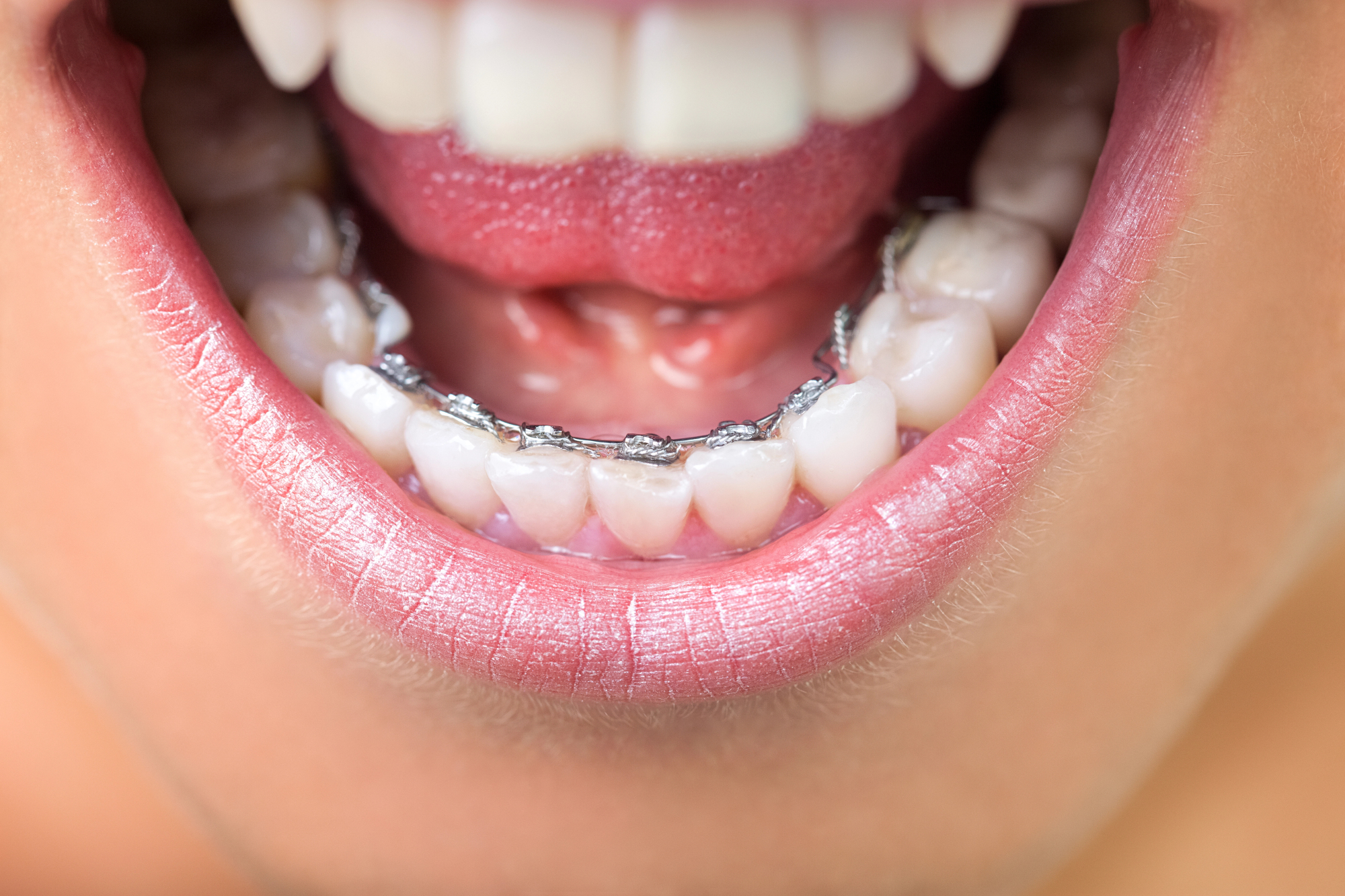Contents

Lingual Braces: The Invisible Orthodontic Solution for a Perfect Smile
Do you want to straighten your teeth without anyone noticing? Lingual braces might be the perfect solution for you! Placed on the inner surface of the teeth, they offer absolute discretion while effectively correcting most orthodontic problems.
Discover everything you need to know about this innovative technique: its indications, its advantages and limitations, as well as its cost and possible alternatives.
Who is Lingual Orthodontics For?
Lingual braces are suitable for anyone who wants to correct their smile with complete discretion, and more specifically:
- For adults and teenagers seeking an aesthetic solution.
- For patients with sufficient height on the inner surface of their teeth to attach the brackets.
However, it is not recommended for children whose growth is not complete and whose teeth are too small to accommodate lingual brackets.
What Corrections Are Possible with Lingual Braces?
Thanks to technical advancements, lingual orthodontics can treat a wide range of problems:
- Dental misalignments (crowding, gaps...).
- Functional disorders (chewing, swallowing, speech...).
- Preparation for other treatments (implant placement, prosthetics...).
What Are the Advantages of Lingual Braces?
Lingual braces offer many advantages over traditional orthodontic treatments:
- Optimal discretion: completely invisible from the outside, they go completely unnoticed.
- Increased comfort: thanks to small, custom-made brackets, they do not interfere with chewing or speech (after a brief adaptation period).
- Proven effectiveness: they offer results similar to visible braces, without compromising the quality of the treatment.
- Easier hygiene: their position on the inside of the teeth limits the appearance of unsightly stains on the front.
What Are the Limitations of Lingual Orthodontics?
Despite its many advantages, the lingual appliance also has some disadvantages:
- More complex brushing: the presence of brackets on the inner surface of the teeth makes oral hygiene more delicate and time-consuming.
- Speech impediments: contact of the brackets with the tongue can cause a temporary lisp, which can be bothersome in daily life.
- Risk of irritation: friction of the appliance against the tongue can cause unpleasant cuts and sores.
- High cost: the complexity of its placement and adjustments makes the lingual appliance much more expensive than traditional treatments.
How Are Lingual Braces Placed?
The placement of lingual braces follows several steps:
- Taking impressions of the dental arches in the office.
- Custom manufacturing of the lingual brackets by a prosthetist, from the molds made.
- Placement of the appliance a few weeks later, by indirect bonding of the brackets in a tray.
- Regular adjustments by the orthodontist (about every month), to adjust the tension of the archwire and monitor the progress of the treatment.
What Are the Best Practices to Adopt with Lingual Braces?
To ensure the success of your treatment and avoid complications, a few golden rules must be followed:
- Brush your teeth and appliance carefully after each meal, paying special attention to the areas behind the teeth.
- Use the accessories recommended by your practitioner (interdental brushes, floss, water flosser...).
- Avoid hard, sticky, or overly sugary foods throughout the duration of the treatment.
- Consult your orthodontist and dentist regularly to prevent the development of cavities or gum problems.
Conclusion
Lingual braces are now a prime alternative for correcting orthodontic problems with complete discretion. Despite a high cost and some constraints, they offer results as satisfactory as traditional treatments, without compromising aesthetics during treatment. A consultation with a qualified orthodontist will help define the most suitable solution for each case, depending on the nature of the malocclusion, as well as the patient's expectations, lifestyle, and budget. The main thing is to no longer let prejudices stand in the way of achieving a beautiful smile!
FAQ About Lingual Braces
Are lingual braces visible?
No, that's the great advantage of this technique: by being fixed on the inner surface of the teeth, lingual braces are completely invisible from the outside. You can therefore smile with confidence, no one will notice you are wearing braces!
What are the differences between lingual braces and traditional braces?
Lingual braces use the same principle as external braces, but are placed on the hidden side of the teeth. They therefore offer the same results in terms of correction, but with maximum discretion during treatment. However, they are also more expensive and more restrictive in daily life.
How long does a lingual braces treatment last?
The duration of a lingual treatment varies greatly depending on the complexity of the defects to be corrected and the individual response to the treatment. It is generally similar to that of conventional orthodontics, i.e., an average of 18 to 24 months, but can extend up to 36 months or more for the most severe cases.
Do lingual braces hurt?
As with any orthodontic appliance, an adjustment period is necessary at the beginning of the treatment. Sensitivities and irritations may be felt but usually subside within a few days or weeks. Your orthodontist may prescribe painkillers and orthodontic wax to relieve initial discomfort.
